Application Examples
- Fluids
- Silane
- Liquid rubbers
- Rubber compounds
- Sealants
- Installed 28 years ago, these solar panels are still going strong.
- Silicone used as an encapsulant for photovoltaic cells - 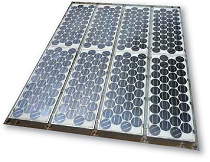
All over the world, solar power is becoming more mainstream as a source of eco-friendly clean energy. These particular solar panels are still providing power some 28 years after they were installed.
These solar panels were installed at Tsubosaka Temple in Nara Prefecture (Takatori, Takaichi District, Nara Prefecture), to provide power for nighttime illumination of the Tenjikutorai Daikannon stone figure located on the temple grounds.
Silicone plays a vital role, as the encapsulant of the cells used to construct the 40 solar panel modules installed at the site.
Used outdoors for nearly 30 years since being installed at the temple, these solar panels are a prime example of the fine properties of silicone, and one that we at Shin-Etsu like to point to as proof of silicone's outstanding weatherability and durability. (Published Oct. 2011)
Tenjikutorai Daikannon stone figure
at Tsubosaka Temple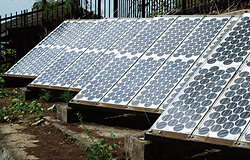
Solar panel modules still working fine
after all these years.- Looks and texture just like the real thing.
Silicone is a key material in the creation of food models. Look at a showcase filled with delicious looking food models. The cream on that dessert and the head on that draft beer are made from silicone-and the look and texture is just like that of the real thing. And RTV* silicone rubber is used in making reproductions of the model parts. Silicone is easy to work with and can be put on display for years with no deterioration. These are a few of the qualities that make silicone an essential material for producing food models. (Published Oct. 2010)
*Room Temperature Vulcanizing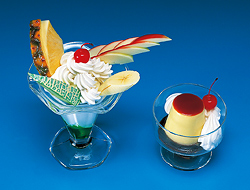

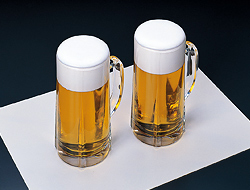
- Piece of contemporary art made using silicone goes on display.
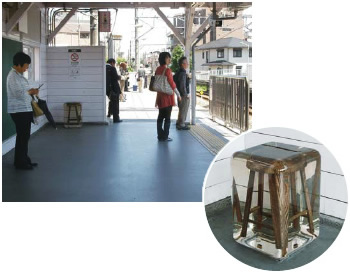
Stool, a work of contemporary art installed
on the southbound platform
of Yaguchinowatashi Station.Stool, a piece by contemporary artist Nawa Kohei is now on display on the southbound platform at Yaguchinowatashi Station on the Tokyu Tamagawa train line. The piece was created under the auspices of the Tamagawa Art Line Project, and plans are to keep it on permanent exhibition. Nawa created the work by placing a stool inside a clear acrylic box, then filling the box with transparent liquid silicone rubber. Silicone was chosen for its high transparency, excellent weathering properties and durability.
Amid the familiar scene of the station, the work exudes presence and is quite an attention grabber among riders on the platform. Be sure to check it out next time you are at Yaguchinowatashi Station. (Published Jul. 2010)
- Silicone rubber opens up new possibilities in art.
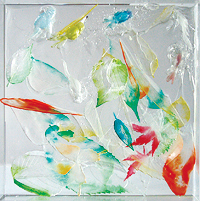
LeafPicture(square)2008
H280×W280×D50mm
Epoxy, siliconeKosuke Ikeda is a young artist whose work is gaining growing notice. He has made several works using transparent silicone rubber as the base material, into which he embeds colorful molded reproductions of animal and plant life. Ikeda calls this the “Picture” series, and he has been working on it since 2006. He said, “With this piece, it's still kind of in development. I'd like to go further with these.”
Ikeda's work has been featured in Bijutsu Techo, a comprehensive art magazine at the forefront of Japan's art scene. (Published Jul. 2008)- New art that delivers an exciting visual and tactile experience.
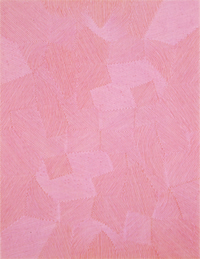
EXISTENCE-WAVE,05.P, 2005
Silicone on Canvas
116.7×91cmKorean artist Oh Yi-Ryang has unveiled a work entitled “EXISTENCE-WAVE”, created using Shin-Etsu's silicone RTV rubber.
Oh arranged thin strands of silicone rubber on the canvas, combining them into straight and curved lines to form an icon. For viewers, the experience is tactile as well as visual; they are welcome to touch the work to feel the soft texture of the silicone rubber used to create it. The work was on exhibit last fall in Japan, where Oh gave a one-man show, and has been exhibited in a number of other countries worldwide. (Published Jan. 2007)For information about this artist's work in Japan, contact Shinoda Art:
Tel:03-3572-3880
